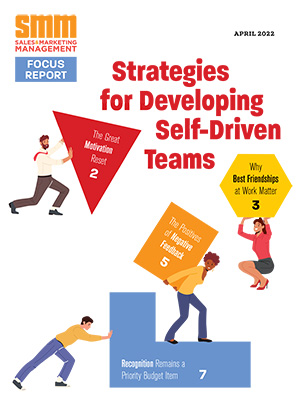In today’s hyper-competitive business landscape, CEOs are under constant pressure to innovate, optimize and deliver measurable revenue growth. Artificial intelligence (AI) has emerged as a transformative tool that can redefine how organizations achieve these goals. By strategically implementing AI, CEOs can unlock new efficiencies, streamline operations and drive revenue more effectively. Below are three impactful ways CEOs can leverage AI to transform their approach.
1. Revolutionize Customer Engagement with AI-Driven Personalization
Today’s customers in both B2B and B2C markets expect tailored experiences that align with their unique needs and challenges. The most important competitive dimension of our era is that of customer experience. Tomorrow’s winners will see this as a corporate strategy – led by the CEO, championed by the CMO and embraced by the entire organization.
Because of the scale and diversity of decision drivers for various buyers, it is no longer possible to manually create personalized experiences for each customer (not even each persona.) For CEOs, embracing AI to enhance personalization is a force multiplier. AI can operate in customer-facing functions in real time or in the background, analyzing vast datasets, identifying individualized patterns, and providing actionable insights that deliver impactful experiences that resonate deeply with customers.
For example, Kaon Demo360+ is an advanced platform that empowers organizations to transform technical product features into outcome-driven value stories. This tool uses AI to create personalized, interactive demonstrations tailored to each customer’s specific challenges and goals. By aligning messaging with customer needs in real time, Kaon Demo360+ accelerates decision-making, builds stronger connections, and drives higher conversion rates.
This approach aligns the entire company on each customer’s value proposition – at scale. This helps align sales and marketing efforts, reducing friction in the buyer’s journey, and is the difference-maker in winning the battle for customer loyalty.
Key Benefits:
- Increased customer engagement through personalized value-driven storytelling
- Accelerated sales cycles by addressing individual customer needs in real time
- Improved alignment between sales and marketing teams
2. Optimize Operations with Predictive Analytics
Operational inefficiencies are often a hidden drain on revenue. AI-powered predictive analytics can help CEOs proactively identify bottlenecks, forecast demand and allocate resources more effectively. This data-driven approach allows organizations to anticipate challenges and seize opportunities before competitors.
For example, predictive maintenance powered by AI can significantly reduce downtime in manufacturing and logistics operations. By analyzing sensor data from equipment, AI algorithms can predict when machinery is likely to fail and recommend preventive measures. This not only minimizes disruptions but also optimizes asset utilization, directly impacting the bottom line.
Additionally, AI can help optimize workforce planning. By analyzing trends in employee performance, engagement, and turnover, CEOs can make more informed decisions about talent acquisition, retention strategies, and resource allocation. This ensures optimal resource allocation and peak operational efficiency.
Key Benefits:
- Reduced operational costs through proactive problem-solving
- Improved resource allocation for maximum efficiency
- Enhanced agility in responding to market changes and demands
3. Enhance Decision-Making with AI-Powered Insights
Effective decision-making is at the core of a CEO’s responsibilities. However, the complexity and volume of data available today can make it challenging to extract meaningful insights. AI-powered analytics tools enable CEOs to cut through the noise, providing actionable insights that deeply resonate with customers.
AI tools can analyze market trends, customer behavior, and competitor activities to identify growth opportunities and potential risks. For instance, sentiment analysis tools can provide CEOs with insights into how their brand is perceived in the market, helping to shape marketing strategies and product development initiatives.
Furthermore, AI-driven dashboards and visualization tools can provide real-time performance metrics across various departments, enabling CEOs to monitor progress and adjust strategies as needed. This real-time feedback loop ensures that organizations remain agile and aligned with their revenue goals.
Key Benefits:
- Faster and more accurate decision-making based on comprehensive data analysis
- Proactive identification of growth opportunities and market risks
- Improved visibility into organizational performance
Why AI is Non-Negotiable for CEOs
The integration of AI into business strategies is no longer optional; it’s a necessity for organizations looking to thrive in today’s fast-paced environment. By leveraging AI for personalized customer engagement, operational optimization, and data-driven decision-making, CEOs can drive significant revenue growth and position their organizations as leaders in their industries.
As tools like Kaon Demo360+ demonstrate, AI is not just about automation – it’s about creating deeper connections, delivering measurable outcomes and unlocking new opportunities. For CEOs ready to embrace this transformative technology, the rewards are clear: greater efficiency, enhanced customer satisfaction, and a sustainable competitive edge.





